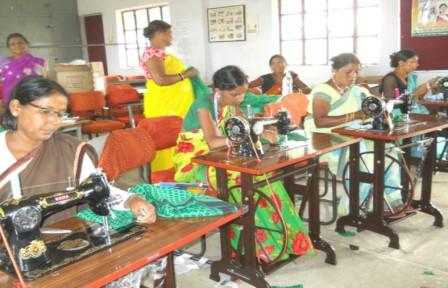.gif)
.gif)
Near D.N Degree College Delhi Road Meerut 250002
24 Hours 7 Days
+917457051855 , +917500188225

Indian Textile and Clothing (Apparel) industry is the second largest manufacturer in the world. The Indian textiles and clothing sector is expected to grow at 10.01 percent in the next 10 years from the current value of INR3.92 lakh crores in 2012–13 to INR10.54 lakh crores in 2021–22. Of these, the garments sector is estimated to grow at an average rate of 15.44 percent over the years, thereby accounting for about 70 percent of the total production The demand for domestic consumption for home textiles and garments is expected to increase rapidly . In fact, the garments sub-sector alone is estimated to increase by seven times from INR 51400 crores in 2012–13 to INR3.70 lakh crores in 2021–22 The Indian textile sub-sector has traditionally been contributing significantly to the economy and manpower as well as to the structural changes in the manufacturing sector. As of 2012, the sector contributed 4 percent of the GDP, 32 percent of the manufacturing sector and 9 percent of total exports The sector’s output is expected to grow at an annual average rate of 10 percent in the next 10 years, thereby increasing its worth to INR 10.5 lakh crores in 2022. Several factors that would contribute to the growth would include:
• Rising income levels are expected to increase the demand for home textiles and garments from domestic consumers is expected to increase
• Free trade agreements provide India a comparative advantage in the export segment as compared to its competitors – China, Bangladesh and Pakistan – as they create opportunities for manufacturers to supply to potential markets in East Asia.
• Low production cost continues to be an advantage for the sector and, consequently, demand from existing foreign markets continues to increase.
• Structural changes in the sector, with a shift from vertically disintegrated to integrated large firms, with automated machines for yarn and fabric production.
• Increased spending on research and development to enter the specialized fabrics and technical textiles sector.
• Favourable policy environment to support domestic and foreign investments and the implementation of schemes to enhance the production capacity and improve technology.
Ready Made Garments
The ready-made garments section has grown rapidly in the last few years. Both exports and domestic demands shall drive sector growth in future. The ready-made garments segment comprises men’s, women’s and kid’s clothing, which may be used for either private (home/office wear) or commercial (uniforms for school, waiters and flight crew) purposes.
• Men’s wear is the biggest segment in the ready-made garment segment, comprising about 43 percent of its share in the total revenue generated. This is followed by women’s wear, with a share of 38 percent; 10 percent share of boys wear and 9 percent for girls wear in the total revenue generated by the ready-made garment segment.
• Changing lifestyles and consumption patterns are expected to drive the sector’s supply of causal wear with an 11 percent growth, which would drive demand for workforce with specialised skills in western formals design, blended fabrics and increased application work on clothe